8 stunning public transport systems Change city
 Bashny.Net
Bashny.Net
Transport megapolisov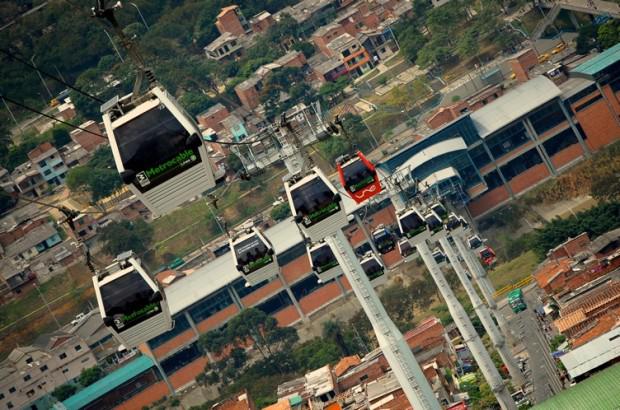
All cities have public transportation. A good thing - it helps people to get to work or get to the other end of town. And some types of transport so unusual that completely change the look of the city. We invite you to read about the eight species, but first - a brief digression.
It is believed that the first public transportation appeared in XVII-th century in France - it was a public coach. Unfortunately, the use of them could afford only the people from the upper class, so that the public coach quickly disappeared as superfluous. It took almost 200 years to the public transport has become an integral part of the city. But by the end of the XIX-th century in most of the cities in full working large transportation systems. So:
1. The Seoul Metropolitan Subway, South Koreya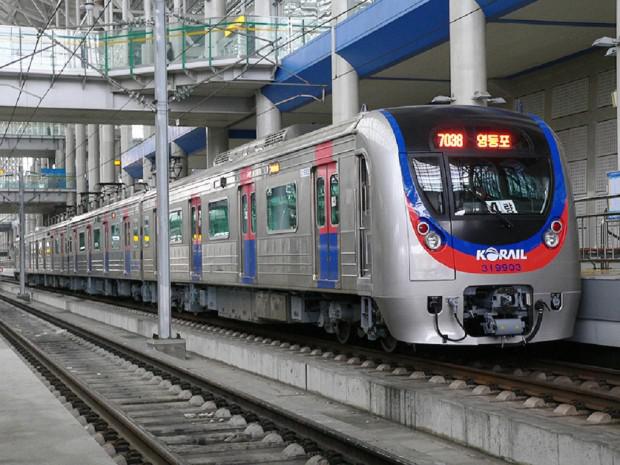
Seoul Metropolitan Subway - and one the biggest subway systems in the world. Daily trains transported by 9, 8 million people, and it's a lot, considering that the population of Seoul - about 21 million of inhabitants. Trains run every two to five minutes, and the branches were laid almost throughout the city and suburbs.
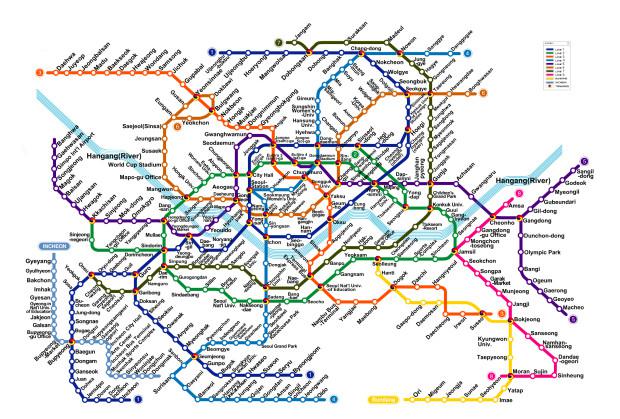
Seoul Metropolitan Subway can be called a high-tech exhibition: there are electronic boards and the world's first virtual marketplace where people can buy food or other small items, using mobile phones. Of course, all stations have Wi-Fi and elevators.
Disadvantages? In the subway at a time can be too many people, and the concentration of CO2 would be unsafe.
2. The Hong Kong subway, Kitay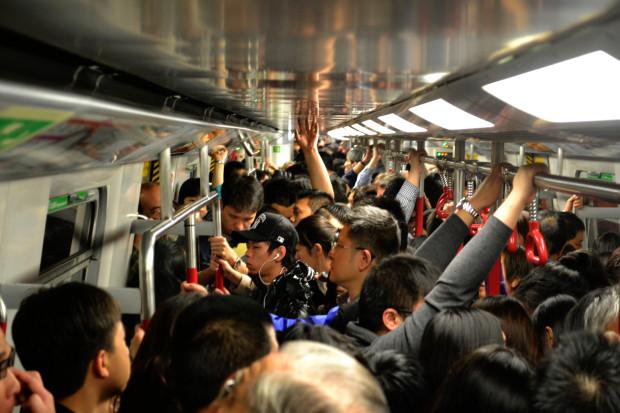
In Hong Kong, 90% of citizens commute to work by public transport. Metro lines pass through the most densely populated areas. In Hong Kong there are several subway systems, which make it not only an effective, but perhaps the most accessible of all the underground world.
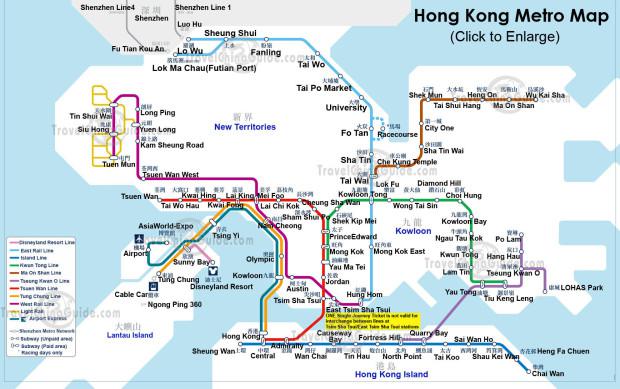
To pay for all public transport can be a single map called «Octopus». Now in circulation goes about ten million of these cards, and this reduces the cost and time of use and maintenance. In walking distance from the subway is full of shops and restaurants.

Metro - a very common mode of transport in Hong Kong and is used universally, so that local residents do not have to overpay for a property just because it is located in the vicinity of transit lines.
3. Ferry Lines Washington SSHA
Washington State has unique geological features, which sometimes make it difficult to move: the archipelago of San Juan and other islands from the mainland difficult to access. For example, to get to Whidbey Island from a large city, it may take several hours by car.
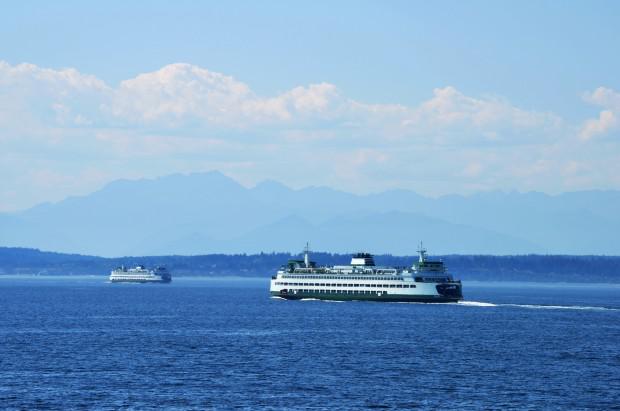
To minimize inconvenience, Washington has created the largest network of passenger ferries in the United States. Twenty docks maintain and manage fantastically effectively. In 2009, the year the system of ferries used 9 9 million vehicles, which in total helped to reach their destination 22, 4 million passengers.
4. Venetian vaporetto, Italiya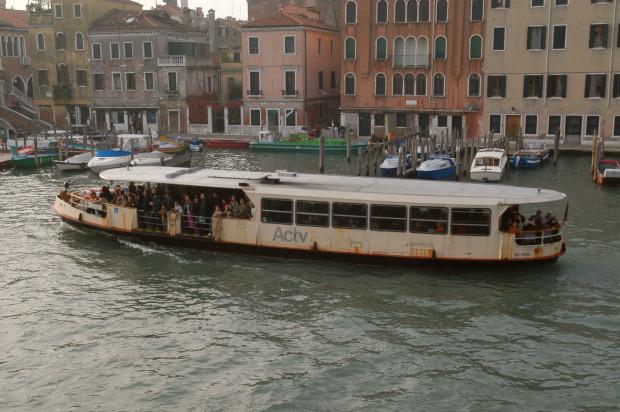
Venice - another unique city in terms of geology, the city is made up of hundreds of islands and channels, so that cars, buses and subways are not suitable for him. Historically, the majority of residents were private gondola gondolier sometimes (depending on income).

But modern Venetians are effective and extremely quick vaporetto (motor vessels or boats), which operate on the principle of buses and go around the clock. Unfortunately, the vaporetto with their high speed indirectly contribute to the destruction of historic buildings.
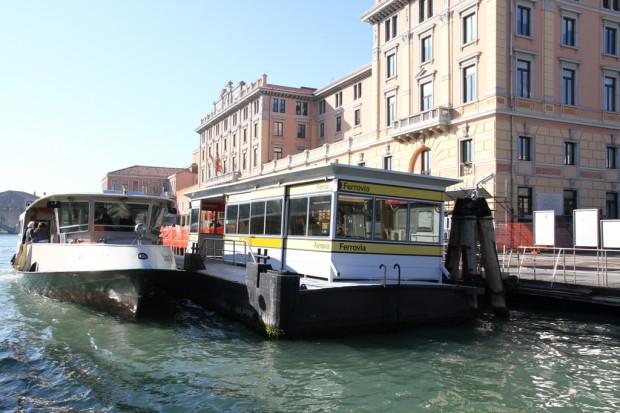
5. Trams in Melbourne, Avstraliya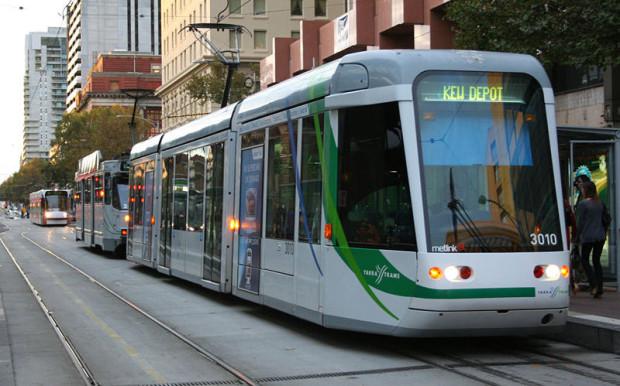
At the end of the XIX-th century, Melbourne could boast the world's largest tram system. Then it was still horse-drawn carriages. The whole city was entangled 250 km of tracks from 1753 stops and tram system allows anyone to freely accessible from the suburbs to the beaches.
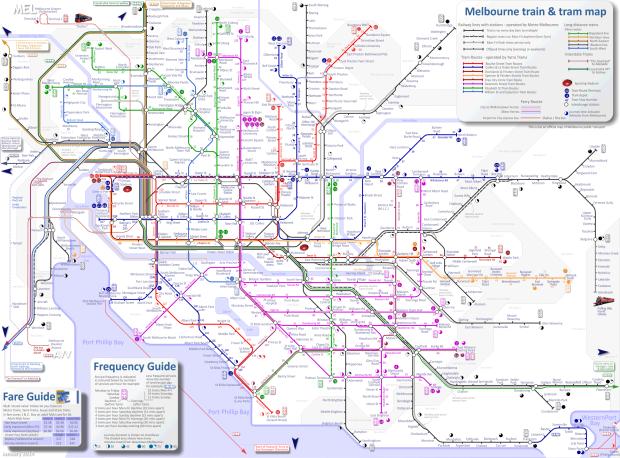
Now Melbourne is done 3 to 5 million visits per week by tram. Although there is a network of nearly 80 years, it was privatized only in 1999, the year. However, this is not news, so it was with many transport systems in the world. For example, the UK train system was privatized only in the 1990s - 2000s.
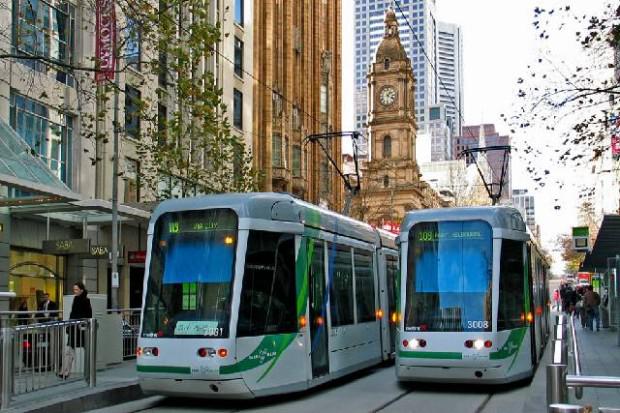
6. SkyTrain in Vancouver, Kanada
SkyTrain in Vancouver was established to reduce ground traffic in the city. Fully automated high-speed monorail line pass through several districts of Vancouver. This transport can be called a high-precision. His popularity is constantly growing, and there are fears that soon SkyTrain will not be able to meet all the demand.
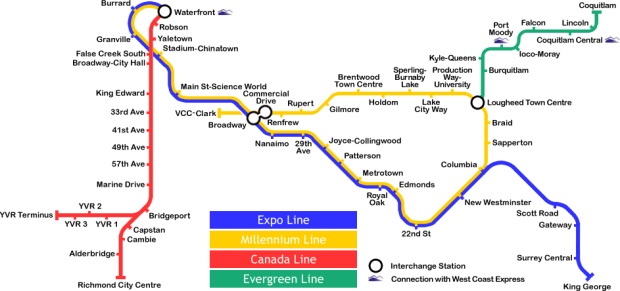
SkyTrain - an excellent example of how public transport can transform the city around the station settles a lot of people, and built a variety of shops, shopping centers and other urban infrastructure.
7. Medellin gondola Kolumbiya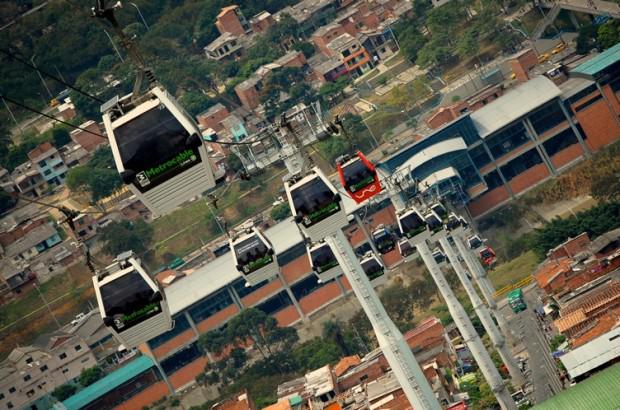
Difficult terrain can lead to huge traffic jams and lack of normal public transport can greatly complicate the life - to get from one end of town to the other have long.
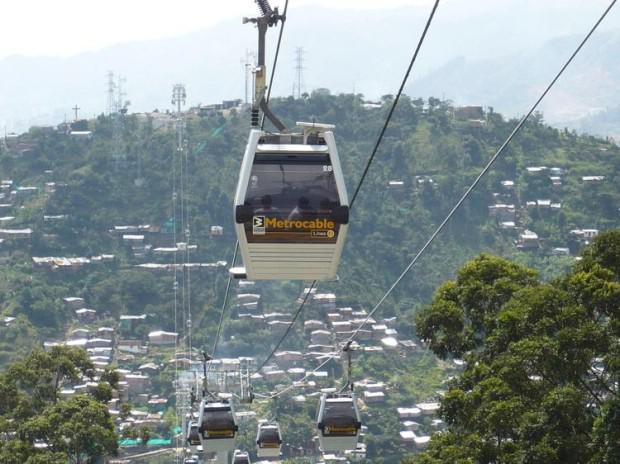
Medellin in Colombia - just one of these places: the city is located on steep slopes, and any transport will have to roll up and down the steep hills. Gourock many roads are bad, so that road transport was not very effective - to get from the outskirts to the center, needed two to two and a half hours.
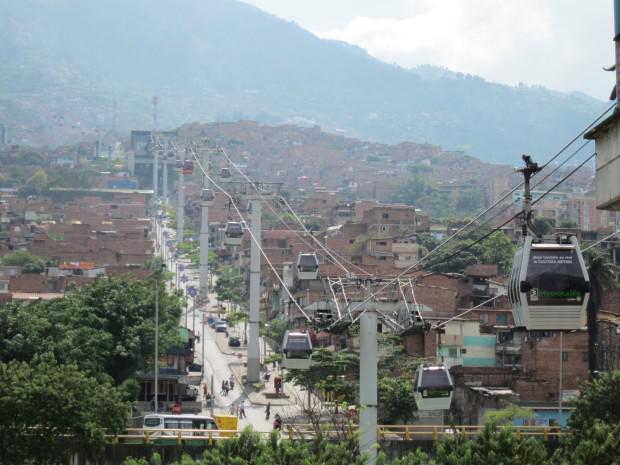
That was until the gondola that connect remote areas of the city with each other and reduce the travel time from one end of town to the other.
8. The cable cars Los Angeles SSHA
These cable cars have been abandoned prior to the beginning of XX-th century. At the end of the XIX-th century estate speculators have created a large network of cable cars to make the mountain areas such as Bunker Hill more attractive. It was based on the same design as for the cable network of trams San Francisco.
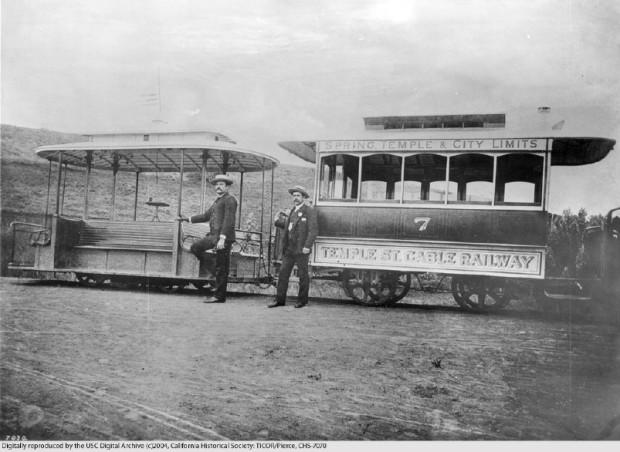
As a result, the cable car stretches from east to west. But in 1902 they were replaced by electric trams, which can be seen in many old movies filmed in the 1910s and 1920s. Trams also at one time gave way to cars and buses.

via factroom.ru

All cities have public transportation. A good thing - it helps people to get to work or get to the other end of town. And some types of transport so unusual that completely change the look of the city. We invite you to read about the eight species, but first - a brief digression.
It is believed that the first public transportation appeared in XVII-th century in France - it was a public coach. Unfortunately, the use of them could afford only the people from the upper class, so that the public coach quickly disappeared as superfluous. It took almost 200 years to the public transport has become an integral part of the city. But by the end of the XIX-th century in most of the cities in full working large transportation systems. So:
1. The Seoul Metropolitan Subway, South Koreya

Seoul Metropolitan Subway - and one the biggest subway systems in the world. Daily trains transported by 9, 8 million people, and it's a lot, considering that the population of Seoul - about 21 million of inhabitants. Trains run every two to five minutes, and the branches were laid almost throughout the city and suburbs.

Seoul Metropolitan Subway can be called a high-tech exhibition: there are electronic boards and the world's first virtual marketplace where people can buy food or other small items, using mobile phones. Of course, all stations have Wi-Fi and elevators.
Disadvantages? In the subway at a time can be too many people, and the concentration of CO2 would be unsafe.
2. The Hong Kong subway, Kitay

In Hong Kong, 90% of citizens commute to work by public transport. Metro lines pass through the most densely populated areas. In Hong Kong there are several subway systems, which make it not only an effective, but perhaps the most accessible of all the underground world.

To pay for all public transport can be a single map called «Octopus». Now in circulation goes about ten million of these cards, and this reduces the cost and time of use and maintenance. In walking distance from the subway is full of shops and restaurants.

Metro - a very common mode of transport in Hong Kong and is used universally, so that local residents do not have to overpay for a property just because it is located in the vicinity of transit lines.
3. Ferry Lines Washington SSHA

Washington State has unique geological features, which sometimes make it difficult to move: the archipelago of San Juan and other islands from the mainland difficult to access. For example, to get to Whidbey Island from a large city, it may take several hours by car.

To minimize inconvenience, Washington has created the largest network of passenger ferries in the United States. Twenty docks maintain and manage fantastically effectively. In 2009, the year the system of ferries used 9 9 million vehicles, which in total helped to reach their destination 22, 4 million passengers.
4. Venetian vaporetto, Italiya

Venice - another unique city in terms of geology, the city is made up of hundreds of islands and channels, so that cars, buses and subways are not suitable for him. Historically, the majority of residents were private gondola gondolier sometimes (depending on income).

But modern Venetians are effective and extremely quick vaporetto (motor vessels or boats), which operate on the principle of buses and go around the clock. Unfortunately, the vaporetto with their high speed indirectly contribute to the destruction of historic buildings.

5. Trams in Melbourne, Avstraliya

At the end of the XIX-th century, Melbourne could boast the world's largest tram system. Then it was still horse-drawn carriages. The whole city was entangled 250 km of tracks from 1753 stops and tram system allows anyone to freely accessible from the suburbs to the beaches.

Now Melbourne is done 3 to 5 million visits per week by tram. Although there is a network of nearly 80 years, it was privatized only in 1999, the year. However, this is not news, so it was with many transport systems in the world. For example, the UK train system was privatized only in the 1990s - 2000s.

6. SkyTrain in Vancouver, Kanada

SkyTrain in Vancouver was established to reduce ground traffic in the city. Fully automated high-speed monorail line pass through several districts of Vancouver. This transport can be called a high-precision. His popularity is constantly growing, and there are fears that soon SkyTrain will not be able to meet all the demand.

SkyTrain - an excellent example of how public transport can transform the city around the station settles a lot of people, and built a variety of shops, shopping centers and other urban infrastructure.
7. Medellin gondola Kolumbiya

Difficult terrain can lead to huge traffic jams and lack of normal public transport can greatly complicate the life - to get from one end of town to the other have long.

Medellin in Colombia - just one of these places: the city is located on steep slopes, and any transport will have to roll up and down the steep hills. Gourock many roads are bad, so that road transport was not very effective - to get from the outskirts to the center, needed two to two and a half hours.

That was until the gondola that connect remote areas of the city with each other and reduce the travel time from one end of town to the other.
8. The cable cars Los Angeles SSHA

These cable cars have been abandoned prior to the beginning of XX-th century. At the end of the XIX-th century estate speculators have created a large network of cable cars to make the mountain areas such as Bunker Hill more attractive. It was based on the same design as for the cable network of trams San Francisco.

As a result, the cable car stretches from east to west. But in 1902 they were replaced by electric trams, which can be seen in many old movies filmed in the 1910s and 1920s. Trams also at one time gave way to cars and buses.

via factroom.ru
Tags
See also
5 cities with self-managed drive buses
"Smart cities improve the environment inside, saving the planet's climate
As you experience the city's geographical position is more important than a hundred years ago
The concept of unmanned public transport
City. Dirty, unfriendly, dangerous
Edible city
Change towns
Japanese public transport system
Moscow - dirty city
The top 10 most energy efficient cities in the world

















